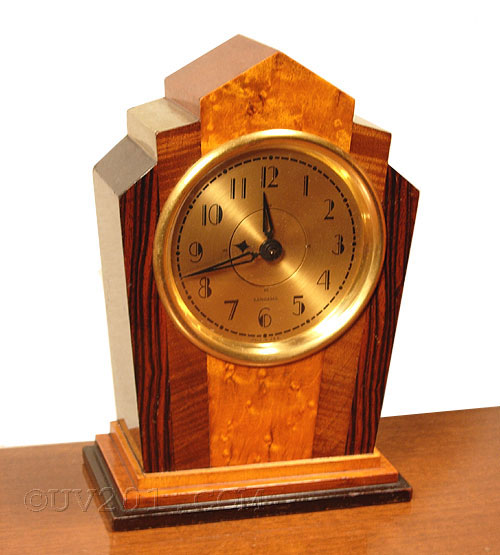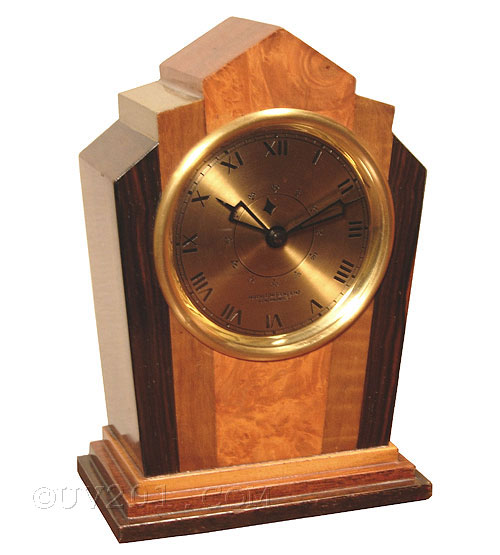|
Hamilton-Sangamo Model S-404 Clock |
||
|
|
||
| This is the model S-404
"Synchronous Motor" clock made by the Hamilton-Sangamo
Corporation of Lancaster, PA and Springfield, IL.
The Sangamo Electric Company of Springfield, IL was a manufacturer of electrical products, which included motors, meters, capacitors, industrial timers, and the like. In later years, they were connected with the Weston company of Newark, NJ, a major maker of meters and related instrumentation. Sangamo appears to exist today as Sangamo BioSciences, and as a British manufacturer of time switches. In the mid-1920's, an arrangement was struck between Sangamo and the Illinois Watch Company to create a line of clocks to be sold by a newly formed Sangamo Clock Company. These clocks used conventional mainspring/balance wheel movements that were wound by Sangamo motors. This approach was an advantage at a time when power line frequency was not reliable, and outages were frequent. In 1928, the Illinois Watch Company and the Sangamo Clock Company were bought by Hamilton Watch Company of Lancaster, PA. This new entity, the Hamilton-Sangamo Clock Company, concentrated on clocks driven by synchronous motors such as the one shown above. In 1931, Hamilton-Sangamo was purchased by General Time Instruments Corporation, which owned Westclox and Seth Thomas. The clock shown below was produced after this date, and is marked as "The Sangamo Clock" of Thomaston, CT. Thomaston was, of course, the home base of Seth Thomas. This merger allowed Seth Thomas to use Sangamo designs throughout their product line. They produced clocks in a variety of traditional and modern designs. The ones shown here are my favorites. The designers came up with a wild Art-Deco design, featuring a variety of contrasting solid woods and veneers and toned lacquer effects. They are about 8 inches high. An interesting feature is the "second hand" which is actually a rotating disk that is flush with the surface of the face. Like most clocks of the time, it was not self-starting. A lever in the back had to be pushed and released to start the motor. |
||
 |
